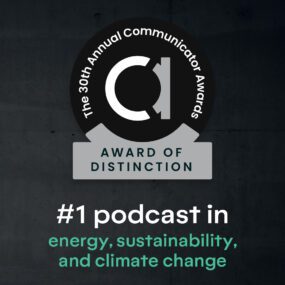4 questions with Erin Hardick, Producer of With Great Power
GridX’s Sam McCabe sits down with Erin Hardick, Producer & Researcher at Latitude Media, to discuss her experiences reporting on the energy transition.

GridX’s Sam McCabe sits down with Erin Hardick, Producer & Researcher at Latitude Media, to discuss her experiences reporting on the energy transition.

Sign up for our magazine
The premier outlet for compelling storytelling around the innovators and innovations driving the clean energy transition.

Erin Hardick, Producer and Researcher at Latitude Media
Sam: What are the most significant trends you’re observing in the energy sector right now, and how do you see these shaping the future of the industry?
Erin: The biggest trend is that utilities are starting to scale technology research and development pilots to operations – both hardware and software solutions. Scaling these projects requires large investments, which regulators have to approve. So regulators now have to face the challenge of what is a reasonable capital investment on these first-of-a-kind utility technologies and what is not.
The digital revolution, which promises to unlock more resiliency, reliability, clean resources, and customer choice has reached the regulatory approval stage, and different states will have to determine what they value most. Not every technology deployment and spending request can be approved; so there will need to be a huge educational undertaking for regulators to make approvals for widespread deployment of tech like virtual power plants and grid enhancing technologies. And I expect in the next two years, we will start to see some big decisions from regulators on what investments are deemed necessary and what are not.
Sam: What are the biggest challenges you face when reporting on the energy industry, and how do you ensure accuracy and impartiality in your stories?
Erin: Tracking technology deployments is difficult. Current information can be hard to access because it’s not always publicly available. And if it is, it often requires digging through regulatory filings…which are not the most user friendly databases to navigate!
My job is to report on the progress of the energy transition within the power sector, so I rely on publicly filed information as much as I can like integrated resource plans, pilot project requests, grant announcements, rate cases, etc. I report what the data tells me.
Sam: How do you envision the role of podcasts and digital media evolving in the energy sector, especially in terms of educating and engaging people?
Erin: There is a lot of information out there about pilot projects and technology deployments, but it is not often compiled in one place. The role of podcasts and digital media is to highlight the progress and put projects in the context of broader industry changes. For instance, regulators want to know what utilities in other states are doing and how those regulatory bodies are handling innovation. In return, utilities want to know how regulators outside of their service territory are dealing with technology deployments. And they want to know what is working for other utilities. There is so much first-of-a-kind work happening right now that it’s hard to keep with all of it. Media can help track deployments and make that information more accessible.
Sam: Can you share a story or podcast episode that had a significant impact on how you view the energy transition? What made it so influential?
Erin: In February, Catalyst with Shayle Kann did a two part conversation on 2024 decarbonization trends with Nat Bullard, who is absolutely wizard on the topic. The conversation is about Nat’s 200-page slide deck on decarbonization that covers everything from batteries to tax credits and the shifting solar market. It’s truly a remarkable look at how energy, and other sectors, are changing. It puts the energy transition in a broader context than just electric utilities.

GridX Nabs a Communicator Award for With Great Power
With Great Power recognized for exceeding industry standards in business-to-business communications.




